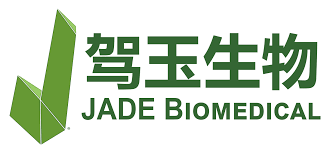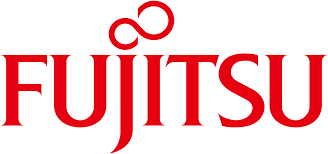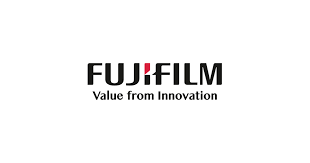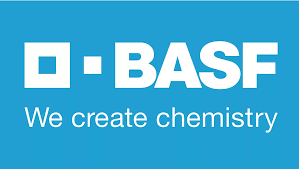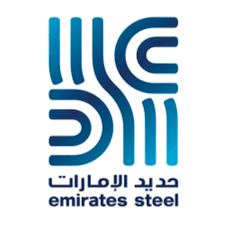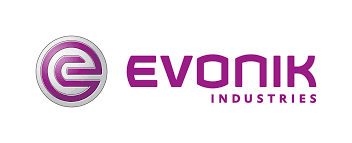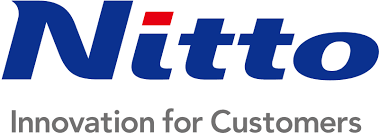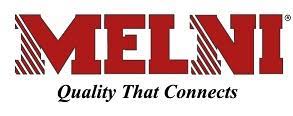Global Organic Electronics Market Size, Share & Trends Analysis Report, by (Application Outlook: Organic Light-Emitting Diode Lighting, Solar Batteries, Displays, Memory Devices, Photovoltaic Cells, (By Materials: Conductors, Dielectric, Luminescent Materials, Electrochromic Materials), (By Components: Active Components, Passive Components) By Region (North America, Europe, APAC, and Others), and Segment Forecasts, 2024 – 2032
- Report Summary
- Table of Contents
- Segmentation
- Methodology
- Download Sample
The organic electronics market was valued at US 98.4 billion in 2023 and is expected to reach US $ 1,705.1 Billion by 2032 growing at a CAGR of 29.9% during the forecast period 2024 – 2032.
Demand for organic electronic in the development of new technologies, advances in organic electronics have boosted its appeal to the consumer electronic market. organic electronics provides the manufacturers and developers of so-called organic electronic material with two advantages over inorganic materials: light weight and the ability to be flexible. Therefore, the new sophisticated designs present in foldable smartphones and curved display TV (amongst others) can be installed with such organic batteries as well.
Market Growth and Size:
- With the evolution of technology and a widening range of applications across different industries, the market for organic electronics has been taking off.
- The market size will continue to expand as the need for flexible and lightweight electronics increases.
Challenges:
- But notwithstanding the attractive attributes of organic electronics, there are difficulties such as stability problems and manufacturing process design.
- The long-term stability of organic electronic devices is a major obstacle to widespread application.
Research and Development:
- The performance, efficiency and stability of organic electronic devices are subject to continuing research efforts.
- In this field, collaborations between academic institutions, research organizations and industry players are common.
Market Players:
- The organic electronics market includes both established electronics companies and innovative start-ups.
- In this rapidly changing market, companies are making research and strategic partnerships their differential advantage.
Government Initiatives and Regulations:
- Government initiatives favouring green and environment-friendly technologies naturally support the development of organic electronics.
- Organic electronics may benefit from regulatory frameworks, and this would encourage such industries as health care or autos.
The Organic Electronics Market Trend Analysis
It is believed that organic devices have better interface abilities for biological systems than inorganic materials. Improved biocompatibility of organic materials has produced applications in the field of medicine including neuron interface. With transparent organic transistors, the electrical responses of lab-cultured human neurons can be sensed and imitated in real time, incorporating possibilities once never before imagined into neurophysiology. Driven by the rapidly expanding consumer electronic goods industry, favorable government efforts and a constantly broadening field of applications for organic electronics coupled with improved performance are all expected to accelerate the CAGR. Nevertheless, these potential obstacles--lack of strength and inappropriateness for the traditional products market-to a wider consumer acceptance may hold back industry development.
Also, organic electronics have found applications from basic academic research to industrial applications, and are predicted they will expand in the market. The market also includes novel applications in such areas as field-effect transistors (FETs), light-emitting diodes, and solar cells that will provide the basis for a new generation of technologies. These semiconducting and conjugated organic materials which can be processed into different kinds of devices make low-cost production possible as well as large area. Moreover, the fact that many organic semiconductors are mechanically more flexible means that they can be used for parts in a flexible electrical element. High-speed, low-cost bulk device fabrication takes advantage of techniques that do not need to operate at any high temperatures. It is the work of well established in line constant technologies such as screen printing (rotary), inkjet and offset which are all modified for optimum compatibility with organized materials both active ("ink") and passive (support). This is how the organic electronics market revenue will be driven.
Segmentation Analysis of the Organic Electronics Market
By Application
According to application, the market is divided into display, lighting and system-related components. The segment for displays was valued at more than 40 billion in 2023 and is projected to grow rapidly by 15 percent per year through the next ten years. Their flexibility and bendability make organic electronics ideal for creating displays that can be curved, rolled or flexed. They are also important in making TVs, smartphones & wearables. As flexible displays open up new possibilities for design and user experience, the market is getting competitive. Besides, organic electronic displays--OLED displays in particular--are not only richly colored and of high contrast ratio but also have wide viewing angles. Displays of this type have excellent image quality and give immersive viewing, which are particularly important in applications such as televisions, smartphones or virtual reality devices. Organic electronics market trends follow the trend for eye-catching displays.
By End-use Industry
Segmented by end-use industry, the organic electronics market is divided into automotive, healthcare, consumer electronics and energy. In terms of the healthcare segment, organic electronics will aid in the creation of flexible and lightweight displays that can be used to manufacture medical imaging machines such as x-ray equipment, ultrasound systems or endoscopes. From 2023 through 2032 this market is projected to increase by more than 6% per annum at CAGR Medical professionals can benefit from the ergonomic advantages and portability of flexible displays, lowering diagnostic precision requirements as well as improving patient care. In addition, organic electronics provide biocompatible materials for implantable medical devices. They consist of biosensors, neural interfaces and drug delivery systems. Because organic electronics are compatible with biological systems, they can be integrated directly without resulting in rejection or adverse reactions. Unlocking a new field for medical treatment The development of organic electronics extends the range and variety of available treatments, while at the same time providing another market stimulus.
Regional Analysis of the Organic Electronics Market
Asia Pacific organic electronics market is poised to grow at a CAGR of over 22 % from 2023-31. Because the consumer electronics industry across much of this region has been growing rapidly and is quite large, opportunities for application abound here. The market for organic electronic components and devices is dominated by China, Japan, South Korea and India which all have a major presence in consumer electronics. There is a high proportion of consumer electronics, including smartphones, televisions and wearable devices. Thanks to the advantages of organic electronics, such as with flexible flat panels and lightweight design; products that use them including vending machines are adopted more rapidly, increasing their market share. The smartphone adoption rate in China this year (2023) is 81 %, which will increase to over 93 % by the end of this decade, according GSMA. Market growth is heightened due to the region's emphasis on technological advancements and rising incomes.
The market share of North America was 35.2 % in all, and South Asia and the Pacific are projected to have CAGR at 32.7 %.
There are several organic companies in North America that produce organic electronic components, and this will spur the expansion of organic electronics. North America also has an enormous healthcare and medicine industry as well a manufacturing one. These will fuel the market's growth.
In South Asia and the Pacific, with a view to producing electricity for country-wide use, manufacturing solar cells and batteries is on an upswing. This region's consumer electronics market is also huge. As a result, the fastest growing region is South Asia and the Pacific.
Technological Advancements to Drive the Growth of Organic Electronics Market in USA: The United States is technically savvy--it has already used advanced technologies such as AI, machine learning and the IoT to enhance its own growth. Moreover, the digital signage and other advanced display technologies that are dominating consumer electronics in America now clearly provide a strong boost to market growth.
Due to the technological advancements and investments which are made for research and development in this country, USA is estimated to be a large market for organic electronics: Large Population, Big Marketplace for Consumer Electronics India has a huge population and is therefore able to become the world's biggest market for consumer electronics. This in turn stimulates demand for organic electronic components. Another factor enabling higher spending on consumer electronics is rising incomes of the middle class throughout urban and rural China.
Large Chemical Industry to Act as a Driver for Organic Electronics In Germany: The chemical industry in Germany is enormous, and organic electronics is an area that could grow along with the manufacturing electronic components. With eco-friendly and low cost characteristics, organic electronic technology is becoming popular with companies and consumers alike.
Supply Chain Disruptions:
Global supply chains have been upended by the pandemic, disrupting production and distribution for electronic components of all kinds. This includes even those used in organic electronics
Production Delays:
Among many industries, lockdowns and social distancing measures as well as workforce disruptions have led to production delays. Perhaps the manufacturing of organic electronics was impacted in a similar way.
Shift in Consumer Demand:
The demand for some electronic devices may have been affected by changes in consumer needs and preferences brought about during the pandemic. This could, for instance, have led to an increased need for laptops and other home office equipment with the rise in remote working.
Impact on End-User Industries:
Organic electronics affect many industries, and in turn the effects of the pandemic on these industries are passed along to organic electronics. The development of organic electronics in cars can be disrupted by, for instance.
Accelerated Digital Transformation:
The silver lining is that the pandemic has compresses digital transformation timelines, thus boosting demand for electronic devices. This would be a boon for the organic electronics market, especially if these are flexible and lightweight devices.
Government Support and Policies:
During the epidemic, government support and policy may have impacted the organic electronics market. Such stimulus packages or incentives for specific industries might influence the research, development and application of organic electronic technology.
Top Key Players Covered
- AGC INC
- Covestro AG
- DuPont
- JOLED Inc.
- Konica Minolta, Inc.
- LG DISPLAY CO., LTD.
- Merck KGaA
- Novaled GmbH
- OSRAM GmbH
- Panasonic Holdings Corporation
- Samsung Display (Samsung Electronics Co., Ltd.)
- Sony Corporation
- Sumitomo Chemical Co., Ltd.
- UNIVERSAL DISPLAY
- Visionox Company
Key Industry Developments in the Organic Electronics Market
With Panasonic's CMOS-based image sensor with organic photoconductive film (OPF) laminated on pixel circuits, which offers excellent color reproducibility under irradiation from any light source, launched in March 2023.
| Report Components | Details |
|---|---|
| Base Year | 2022 |
| Forecast Period | 2021-2029 |
| Quantitative Units | Revenue in US $ |
| Segments Covered | Application Outlook: Organic Light-Emitting Diode Lighting, Solar Batteries, Displays, Memory Devices, Photovoltaic Cells; By Materials: Conductors, Dielectric, Luminescent Materials, Electrochromic Materials; By Components: Active Components, Passive Components |
| Countries Covered | U.S. and Canada in North America, Germany, France, U.K., Netherlands, Switzerland, Belgium, Russia, Italy, Spain, Turkey, Rest of Europe in Europe, China, Japan, India, South Korea, Singapore, Malaysia, Australia, Thailand, Indonesia, Philippines, Rest of Asia-Pacific (APAC) in the APAC, Others include Saudi Arabia, U.A.E, South Africa, Egypt, Israel, Rest of Middle East and Africa (MEA), Brazil, Argentina, Mexico, and Rest of South America as part of South America |
| Market Players Covered | AGC INC, Covestro AG, DuPont, JOLED Inc., Konica Minolta, Inc., LG DISPLAY CO., LTD., Merck KGaA, Novaled GmbH, OSRAM GmbH, Panasonic Holdings Corporation, Samsung Display (Samsung Electronics Co., Ltd.), Sony Corporation, Sumitomo Chemical Co., Ltd., UNIVERSAL DISPLAY, Visionox Company |
Table of Contents
- Introduction Of Global Organic Electronics Market
- Overview of the Market
- Scope of Report
- Assumptions
- Executive Summary
- Research Methodology
- Data Mining
- Validation
- Primary Interviews
- List of Data Sources
- Global Organic Electronics Market Outlook
- Overview
- Market Dynamics
- Drivers
- Restraints
- Opportunities
- Porters Five Force Model
- Bargaining Power of Suppliers
- Threat of New Entrants
- Threat of Substitutes
- Competitive Rivalry
- Bargaining Power among Buyers
- Value Chain Analysis
- Global Organic Electronics Market, By Application
- Overview
- Organic Light-Emitting Diode Lighting
- Solar Batteries
- Displays
- Memory Devices
- Photovoltaic Cells
- Global Organic Electronics Market, By Materials
- Overview
- Conductors
- Dielectric
- Luminescent Materials
- Electrochromic Materials
- Global Organic Electronics Market, By Components
- Overview
- Active Components
- Passive Components
- Global Organic Electronics Market, By Region
- North America
- U.S.
- Canada
- Europe
- Germany
- U.K.
- France
- Rest of Europe
- Asia Pacific
- China
- Japan
- India
- South Korea
- Singapore
- Malaysia
- Australia
- Thailand
- Indonesia
- Philippines
- Rest of Asia Pacific
- Others
- Saudi Arabia
- U.A.E.
- South Africa
- Egypt
- Israel
- Rest of Middle East and Africa (MEA)
- Brazil
- Argentina
- Mexico
- Rest of South America
- North America
- Company Profiles
- AGC INC
- Company Overview
- Key Executives
- Operating Business Segments
- Product Portfolio
- Financial Performance (As per availability)
- Key News
- Covestro AG
- Company Overview
- Key Executives
- Operating Business Segments
- Product Portfolio
- Financial Performance (As per availability)
- Key News
- DuPont
- Company Overview
- Key Executives
- Operating Business Segments
- Product Portfolio
- Financial Performance (As per availability)
- Key News
- JOLED Inc.
- Company Overview
- Key Executives
- Operating Business Segments
- Product Portfolio
- Financial Performance (As per availability)
- Key News
- Konica Minolta, Inc.
- Company Overview
- Key Executives
- Operating Business Segments
- Product Portfolio
- Financial Performance (As per availability)
- Key News
- LG DISPLAY CO., LTD.
- Company Overview
- Key Executives
- Operating Business Segments
- Product Portfolio
- Financial Performance (As per availability)
- Key News
- Merck KGaA
- Company Overview
- Key Executives
- Operating Business Segments
- Product Portfolio
- Financial Performance (As per availability)
- Key News
- Novaled GmbH
- Company Overview
- Key Executives
- Operating Business Segments
- Product Portfolio
- Financial Performance (As per availability)
- Key News
- OSRAM GmbH
- Company Overview
- Key Executives
- Operating Business Segments
- Product Portfolio
- Financial Performance (As per availability)
- Key News
- Panasonic Holdings Corporation
- Company Overview
- Key Executives
- Operating Business Segments
- Product Portfolio
- Financial Performance (As per availability)
- Key News
- Samsung Display (Samsung Electronics Co., Ltd.)
- Company Overview
- Key Executives
- Operating Business Segments
- Product Portfolio
- Financial Performance (As per availability)
- Key News
- Sony Corporation
- Company Overview
- Key Executives
- Operating Business Segments
- Product Portfolio
- Financial Performance (As per availability)
- Key News
- Sumitomo Chemical Co., Ltd.
- Company Overview
- Key Executives
- Operating Business Segments
- Product Portfolio
- Financial Performance (As per availability)
- Key News
- UNIVERSAL DISPLAY
- Company Overview
- Key Executives
- Operating Business Segments
- Product Portfolio
- Financial Performance (As per availability)
- Key News
- Visionox Company
- Company Overview
- Key Executives
- Operating Business Segments
- Product Portfolio
- Financial Performance (As per availability)
- Key News
- AGC INC
Global Organic Electronics Market Segmentation
Organic Electronics by Application Outlook: Market Size & Forecast 2024-2032
- Organic Light-Emitting Diode Lighting
- Solar Batteries
- Displays
- Memory Devices
- Photovoltaic Cells
Organic Electronics by Materials: Market Size & Forecast 2024-2032
- Conductors
- Dielectric
- Luminescent Materials
- Electrochromic Materials
Organic Electronics by Components: Market Size & Forecast 2024-2032
- Active Components
- Passive Components
Organic Electronics by Geography: Market Size & Forecast 2024-2032
- North America (USA, Canada, Mexico)
- Europe (Germany, UK, France, Russia, Italy, Rest of Europe)
- Asia-Pacific (China, Japan, South Korea, India, Southeast Asia, Rest of Asia-Pacific)
- South America (Brazil, Argentina, Columbia, Rest of South America)
- Middle East and Africa (Saudi Arabia, UAE, Egypt, Nigeria, South Africa, Rest of MEA)
Major Players:
- AGC INC
- Covestro AG
- DuPont
- JOLED Inc.
- Konica Minolta, Inc.
- LG DISPLAY CO., LTD.
- Merck KGaA
- Novaled GmbH
- OSRAM GmbH
- Panasonic Holdings Corporation
- Samsung Display (Samsung Electronics Co., Ltd.)
- Sony Corporation
- Sumitomo Chemical Co., Ltd.
- UNIVERSAL DISPLAY
- Visionox Company


